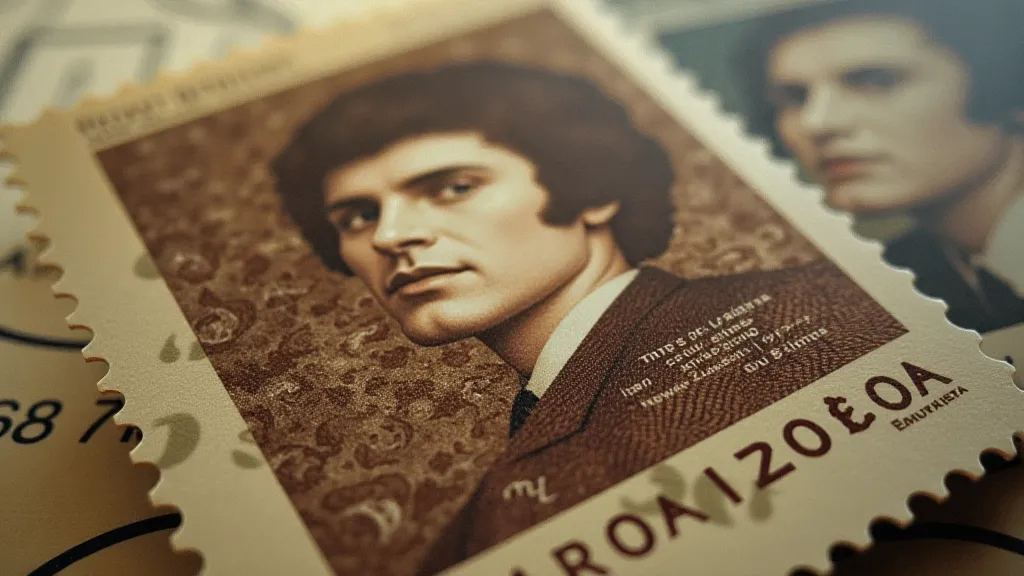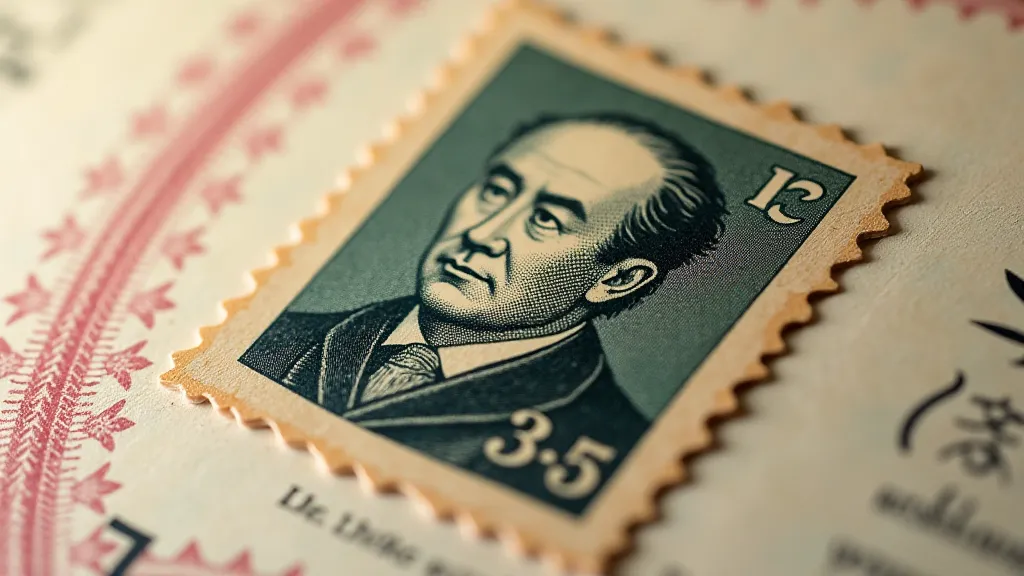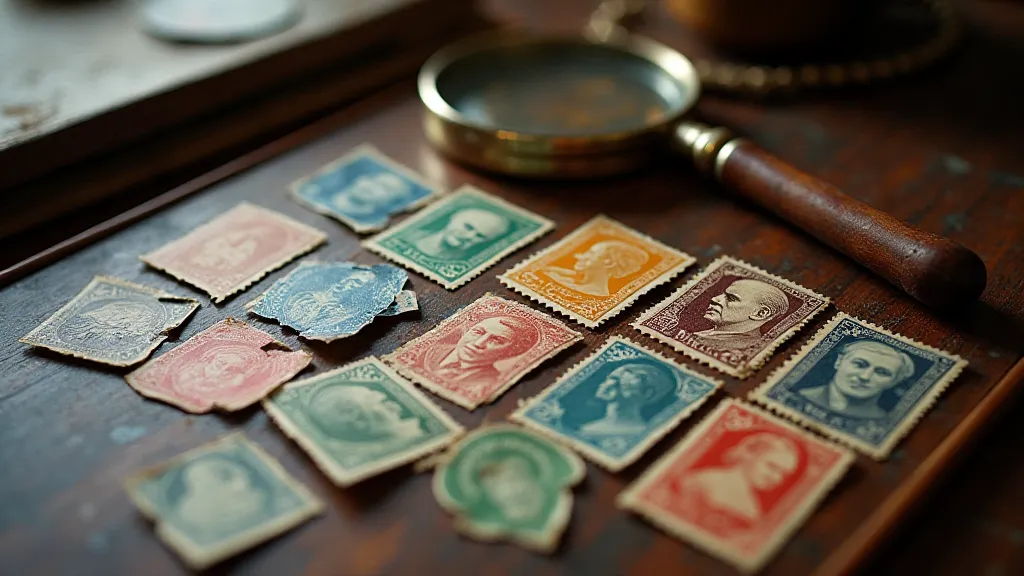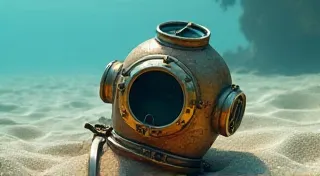The Fragile Pantheon: Stamps as Tributes to Artists and Literary Figures
There's a certain magic held within a vintage postage stamp. It's more than just a tiny piece of paper, perforated and inked. It's a portal, a tangible link to the past, often celebrating moments and individuals who shaped our world. While many collect stamps for their rarity or postal history, a particular fascination lies in those that immortalize artists, writers, and other cultural icons – a fragile pantheon of national pride etched onto miniature canvases. These aren't just stamps; they are tributes, artistic expressions in themselves, and windows into a nation's soul.
My own journey into philately began not with the allure of investment or completion of sets, but with a single stamp. It depicted Gustav Klimt, the Austrian Symbolist painter. I was a teenager, captivated by Klimt’s opulent, dreamlike style, and discovering this beautiful stamp felt like encountering a kindred spirit. The portrait wasn't a photographic reproduction, but a stylized interpretation – a testament to the artist's own artistic vocabulary. That small piece of paper sparked a deep appreciation for the connection between art, identity, and memory.

A Nation’s Appreciation: Stamps as Cultural Declarations
The issuing of a postage stamp is rarely a random act. It's a considered decision, often reflecting a nation's cultural priorities and its relationship to its artistic heritage. Consider, for example, the numerous stamps dedicated to William Shakespeare across the British Commonwealth. The Bard’s influence is undeniable, and his portrayal on these stamps, ranging from formal portraits to illustrative scenes from his plays, reinforces his enduring status as a national icon. Similarly, France has consistently celebrated its literary giants—Victor Hugo, Marcel Proust, and Albert Camus—ensuring their legacies remain visible and accessible.
The choice of artist or writer to feature on a stamp isn't solely based on popularity. Sometimes it's a deliberate attempt to champion an underappreciated figure, to bring attention to a forgotten genius. In other cases, it’s a means of acknowledging a pivotal moment in a nation's cultural evolution. Think of the stamps issued in Russia commemorating the 200th anniversary of Alexander Pushkin, or the stamps from Latin American countries celebrating Gabriel Garcia Marquez and the ‘Boom’ of Latin American literature.
Craftsmanship and the Miniature Art Form
Early stamp designs were often engraved, requiring incredible skill and artistry. Engravers were master craftsmen, capable of translating complex portraits and intricate scenes onto these tiny canvases. The detail achievable through engraving is astonishing, and the resulting stamps possess a unique quality that’s hard to replicate with modern printing techniques. Look closely at a well-preserved engraved stamp – you’re looking at a miniature masterpiece.
Later, the introduction of photogravure and chromolithography allowed for more vibrant colors and photographic reproduction, broadening the possibilities for stamp design. While the artistry shifted, the core principle remained: to create a compelling image that would be both recognizable and aesthetically pleasing. The limitations of size and printing technology, however, only served to sharpen the creativity involved.
The Imperfect Beauty of Age and Handling
Vintage stamps, particularly those that circulated, bear the marks of their journeys. They may be slightly creased, have faded colors, or exhibit minor imperfections. These aren’t flaws; they're stories. They’re evidence of the stamp’s passage through the postal system, a tangible link to the hands that handled it, the letters it carried, and the lives it touched. A perfectly pristine, uncirculated stamp, while valuable, often lacks the character and charm of one that’s seen a bit of the world.
Restoring damaged stamps is a delicate art, best left to experts. Aggressive cleaning or attempts at “repairing” can easily diminish the stamp's value and authenticity. The beauty of these vintage pieces lies in their inherent imperfection, their weathered patina. Preservation, rather than restoration, is the guiding principle – careful storage in acid-free albums and sleeves is the best way to ensure their longevity.

Beyond Rarity: The Emotional Value of Collecting
While rare stamps command high prices in the philatelic market, the true value of collecting these tributes to artists and writers lies beyond monetary worth. It's about connecting with the past, appreciating the enduring power of art and literature, and understanding a nation’s cultural identity. Holding a stamp depicting Frida Kahlo in your hand, for instance, isn't just about acquiring a piece of paper; it’s about acknowledging her defiant spirit, her groundbreaking art, and her lasting legacy.
My Klimt stamp remains a cornerstone of my collection. It’s not the most valuable stamp I own, but it holds a significance that transcends its price. It’s a reminder of my youthful fascination with art, a symbol of the power of beauty, and a tangible link to a world of creativity and imagination.
Preserving the Fragile Pantheon
The practice of collecting vintage postage stamps is more than a hobby; it’s a form of cultural preservation. These tiny pieces of paper offer a unique window into the past, allowing us to connect with the artists, writers, and thinkers who shaped our world. By carefully preserving these fragile pantheons, we ensure that their legacies continue to inspire and enrich future generations.
The beauty of philately isn't just about acquiring rare and valuable items. It’s about appreciating the stories they tell, the artistry they embody, and the connections they forge between us and the past. It’s about recognizing that even the smallest of objects can hold profound meaning and lasting significance.






